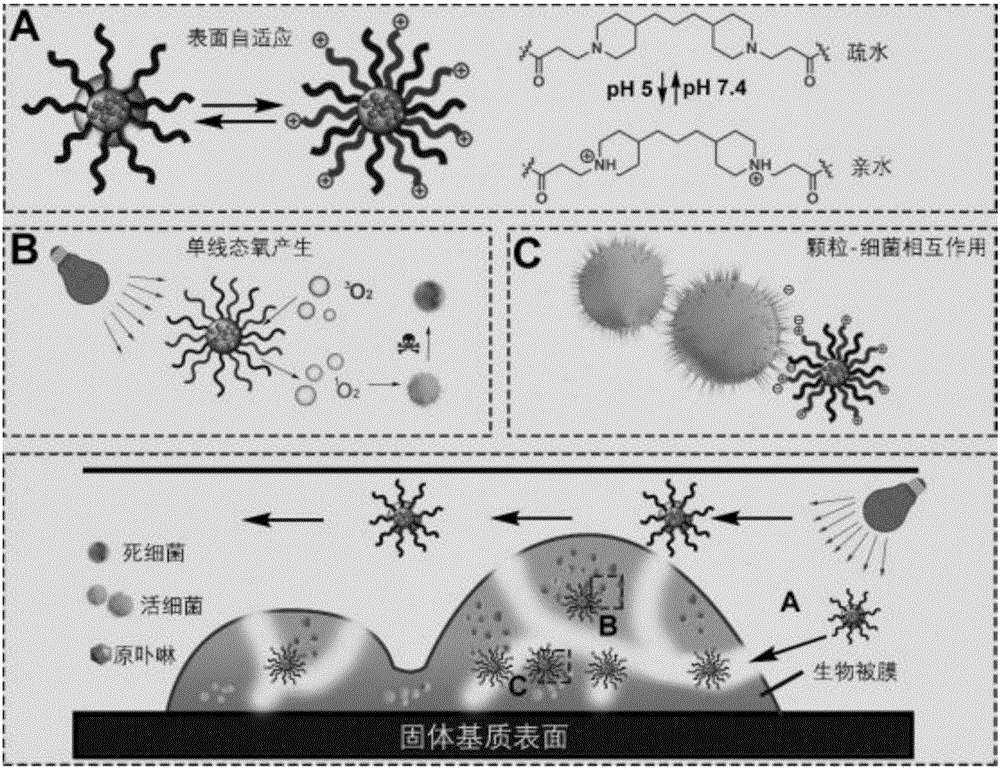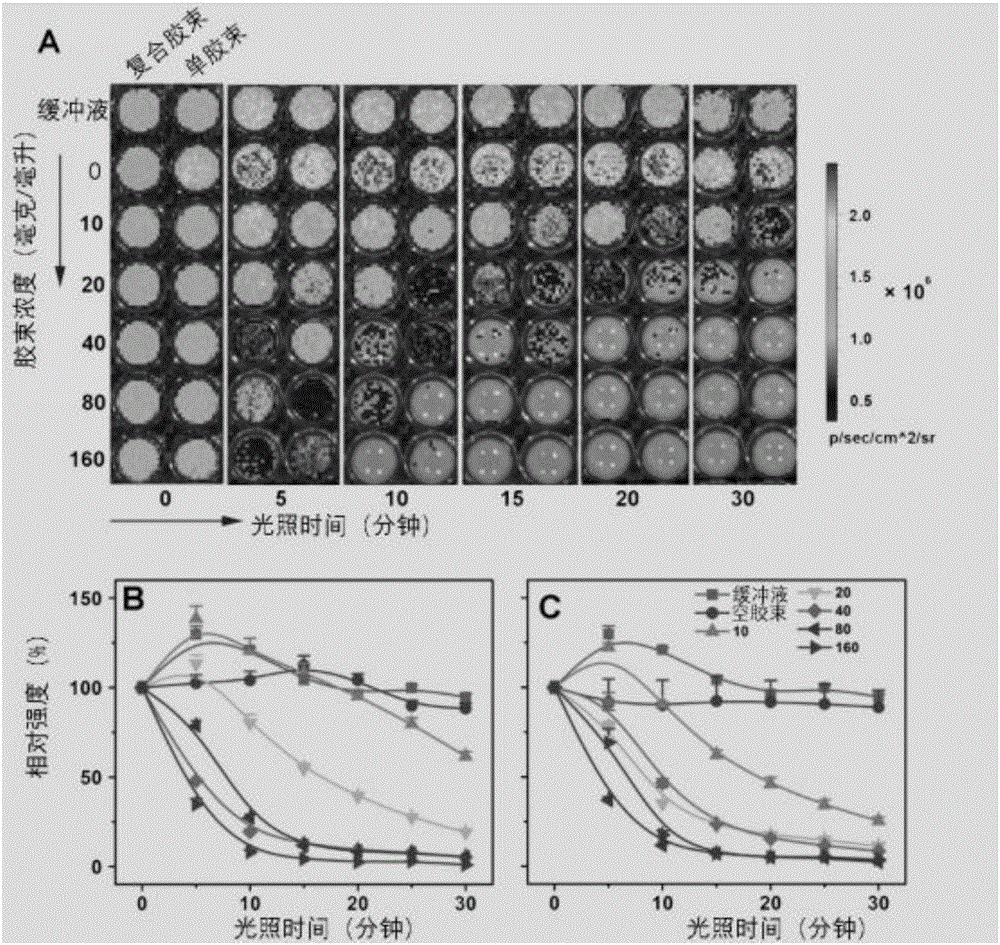Preparation method of photosensitizer-supported polymeric micelle and application of micelle in killing of planktobacteria and bacterial biofilms
A technology of planktonic bacteria and polymers, applied in the field of nano-biomedical materials, can solve the problems of low water solubility, limiting biological distribution and production efficiency of active oxygen components, and achieve low light energy, good singlet oxygen production efficiency, and simple light source Effect
- Summary
- Abstract
- Description
- Claims
- Application Information
AI Technical Summary
Problems solved by technology
Method used
Image
Examples
Embodiment
[0034] (1) The preparation of polyethylene glycol-b-polycyclocaprolactone (PEG-b-PCL), the steps are as follows:
[0035] 1) Add 2.0g CH 3 O-PEG 114 -OH (0.4 mmol, PDI: 1.04) and 4.2 g of redistilled ε-CL (36.8 mmol, 92 eq.) were added to a 50 mL dry Schlenk bottle.
[0036] 2) Add 15mL double-distilled anhydrous toluene to dissolve, add a drop of Sn(Oct) 2 (0.5 mol%).
[0037] 3) Freeze with liquid nitrogen—vacuumize—fill with nitrogen—thaw, and cycle three times.
[0038] 4) React overnight in an oil bath at 100° C. under nitrogen protection.
[0039] 5) After the reaction is completed, cool to room temperature, add an appropriate amount of dichloromethane to dilute, and then precipitate in glacial ether. After the precipitation is complete, filter with suction, wash the filter cake three times with glacial ether, and dry the white powdery solid obtained after vacuum drying, which is PEG 5k -b-PCL.
[0040] (2) Preparation of polycyclocaprolactone-b-poly-β-urethane (P...
PUM
 Login to View More
Login to View More Abstract
Description
Claims
Application Information
 Login to View More
Login to View More - Generate Ideas
- Intellectual Property
- Life Sciences
- Materials
- Tech Scout
- Unparalleled Data Quality
- Higher Quality Content
- 60% Fewer Hallucinations
Browse by: Latest US Patents, China's latest patents, Technical Efficacy Thesaurus, Application Domain, Technology Topic, Popular Technical Reports.
© 2025 PatSnap. All rights reserved.Legal|Privacy policy|Modern Slavery Act Transparency Statement|Sitemap|About US| Contact US: help@patsnap.com



